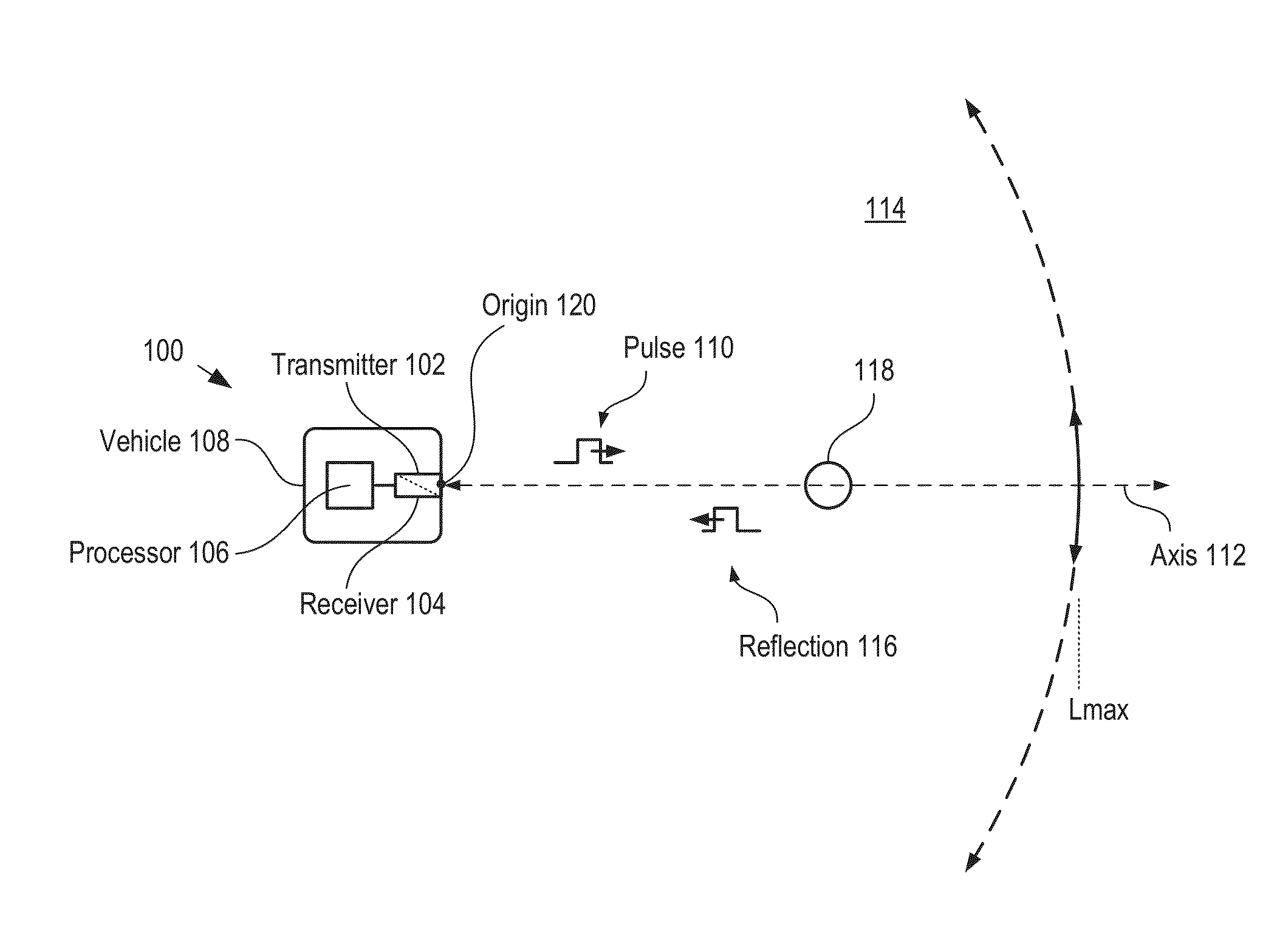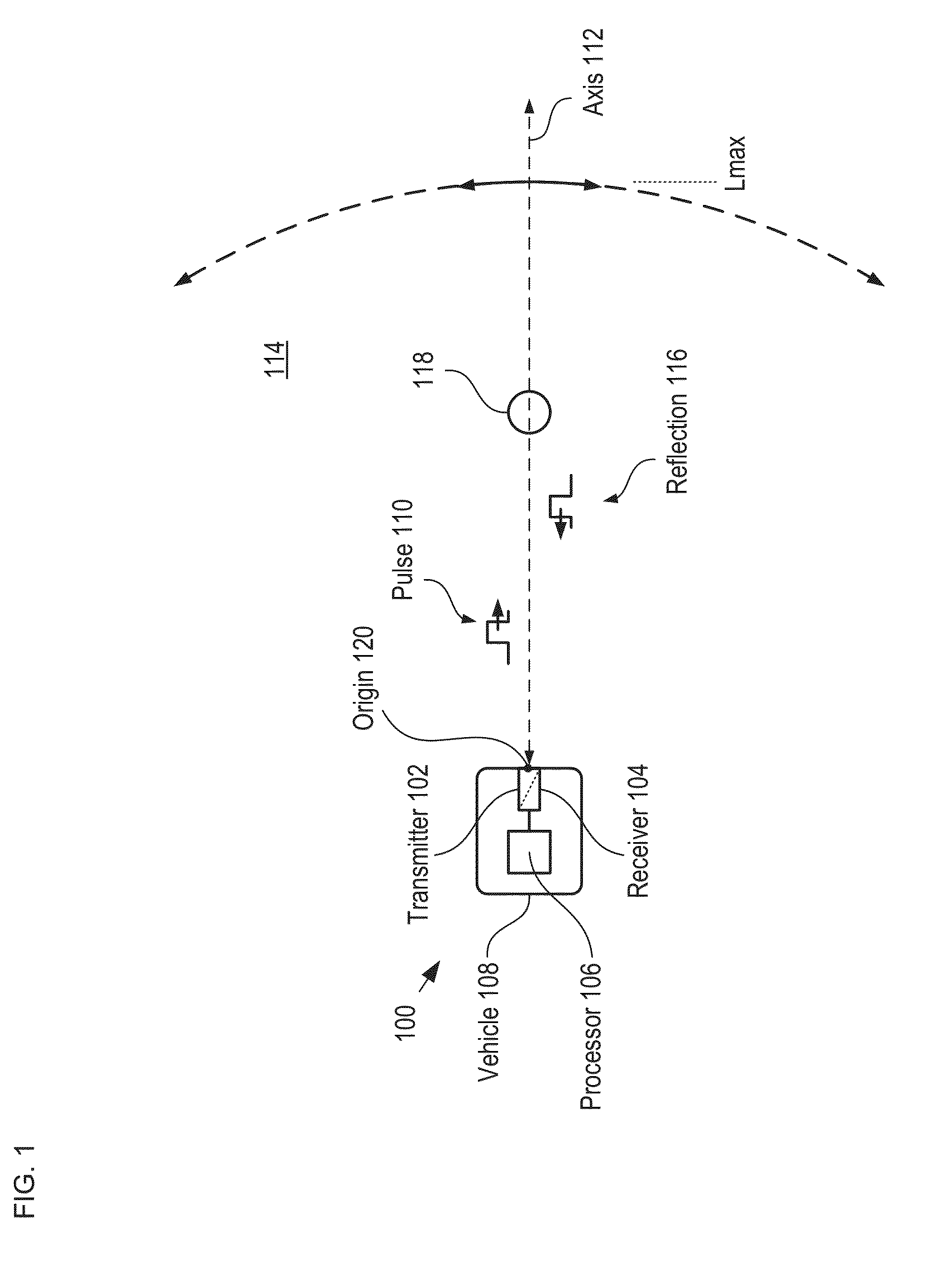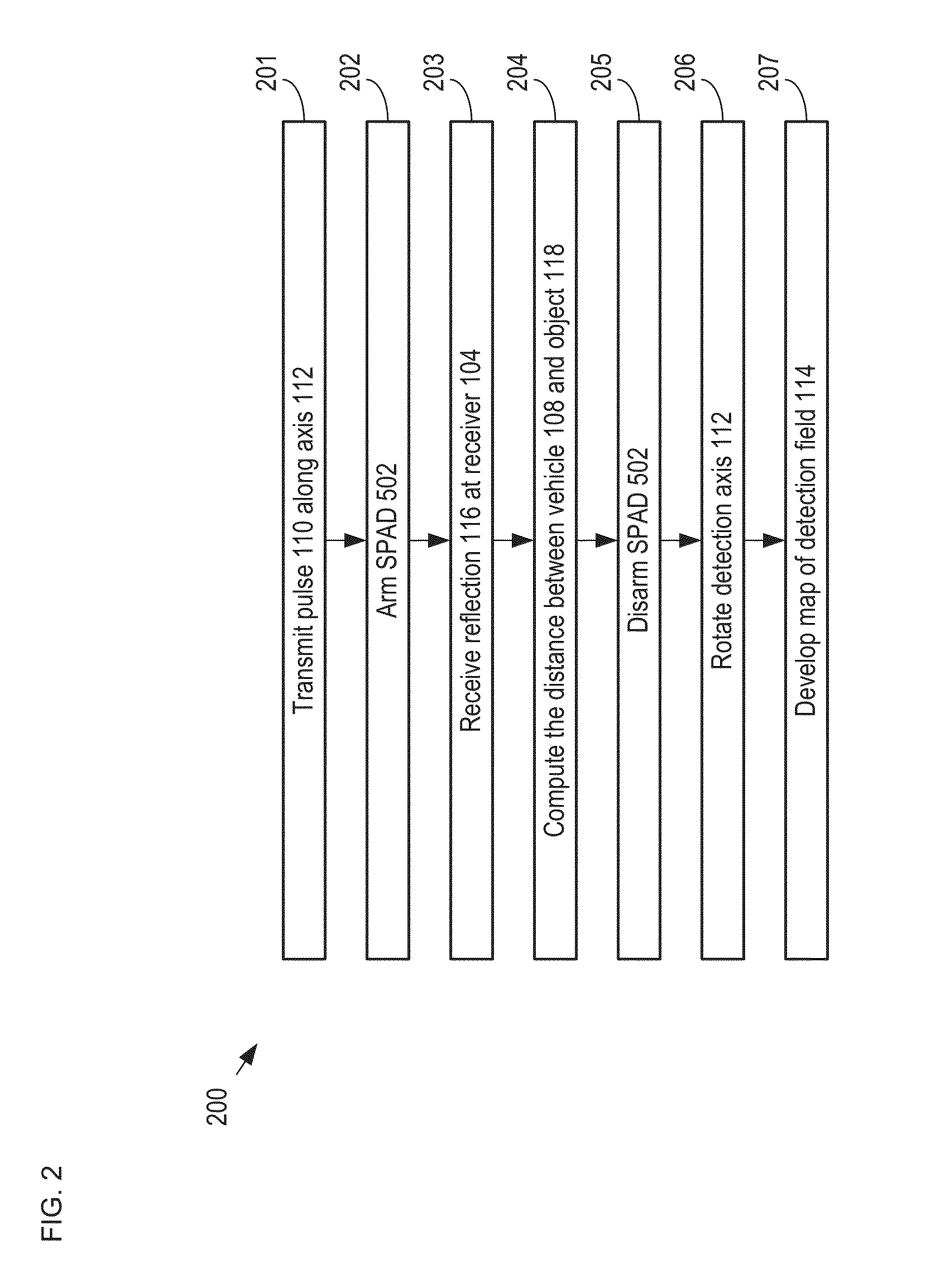LiDAR System Comprising A Single-Photon Detector
a detector and lidar technology, applied in the field of laser range finding, can solve the problems of limiting the laser power that can be used in the lidar system, affecting the measurement sensitivity in this wavelength regime, and the requirements of a lidar system used in automotive applications are quite challenging
- Summary
- Abstract
- Description
- Claims
- Application Information
AI Technical Summary
Benefits of technology
Problems solved by technology
Method used
Image
Examples
Embodiment Construction
[0023]FIG. 1 depicts a schematic drawing of a LiDAR system in accordance with the illustrative embodiment of the present invention. System 100 includes transmitter 102, receiver 104, and processor 106.
[0024]FIG. 2 depicts operations of a method for developing a map of objects in a detection field in accordance with the illustrative embodiment of the present invention. Method 200 begins with operation 201, wherein transmitter 102 transmits a train of pulses 110 along detection axis 112.
[0025]Transmitter 102 is an optical transmitter suitable for emitting a train of optical pulses having a wavelength within the range of approximately 1350 nm to approximately 1390 nm. Typically transmitter 102 generates the optical pulses using a laser source, such as a diode laser.
[0026]One skilled in the art will recognize that the performance of a LiDAR system is based on several factors, such as available optical power, the sensitivity of the detector used to detect reflected pulses, and the desire...
PUM
 Login to View More
Login to View More Abstract
Description
Claims
Application Information
 Login to View More
Login to View More - R&D
- Intellectual Property
- Life Sciences
- Materials
- Tech Scout
- Unparalleled Data Quality
- Higher Quality Content
- 60% Fewer Hallucinations
Browse by: Latest US Patents, China's latest patents, Technical Efficacy Thesaurus, Application Domain, Technology Topic, Popular Technical Reports.
© 2025 PatSnap. All rights reserved.Legal|Privacy policy|Modern Slavery Act Transparency Statement|Sitemap|About US| Contact US: help@patsnap.com



